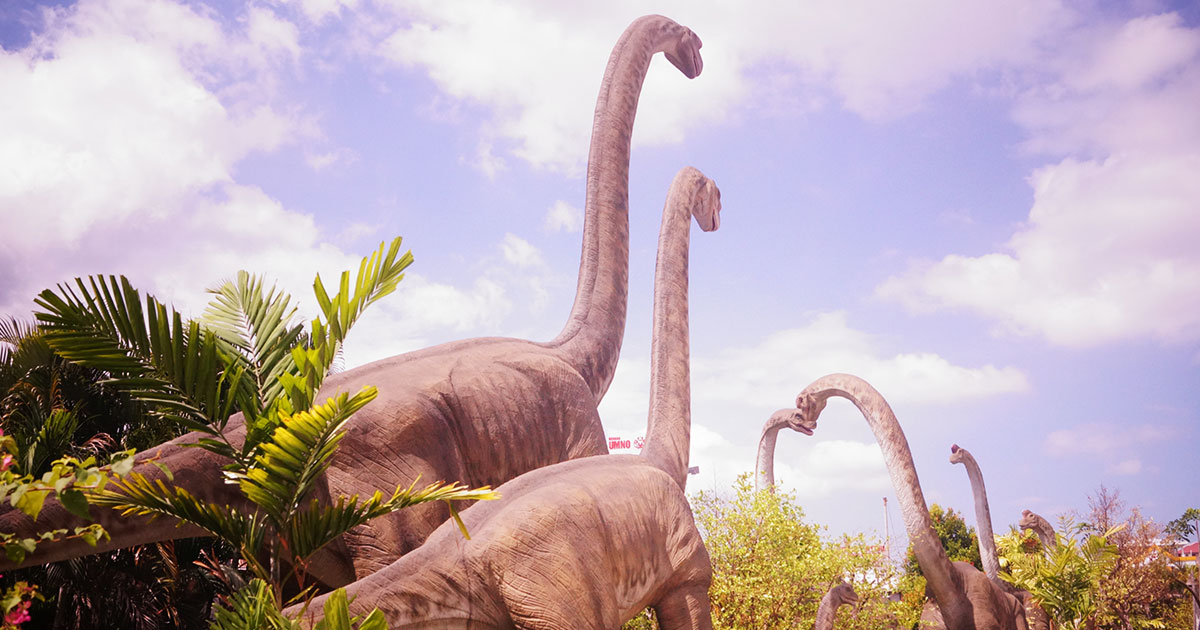It is more than an ordinary exhibition. This is serious stuff – it is the Jurassic Research Centre (JRC) at Komtar, Penang, where dinosaurs are free to roam again.
Within its own natural habitat in the Jurassic Park, every single dinosaur that you see here comes alive.


Be warned! You may find yourself face-to-face with a fearsome T-rex or ravenous little raptors.

I was of course sceptical when ‘Professor’ Harith Iskandar gave a brief introduction about the do’s and don’ts of JRC on video. After all, this whole place was meant for children.
This is why we nearly gave it the skip when we were planning the holiday trip to Penang. I thought this was just another one of those dinosaur exhibitions we have visited either at the National Science Centre or at Avenue K in the past, now making its appearance at Komtar.




These exhibitions never made a lasting impact on me. We are too familiar with the usually life-size dinosaurs that are displayed in museum settings that we would not want to visit it again.
But after walking through the JRC, I came out feeling that this was as real as it could appear, as if it is a real research centre where scientists are experimenting with the biggest creatures that once roamed this Earth.



Here is where the adrenaline starts pumping into your blood stream, when you see the scientists at JRC ‘incubating’ dinosaur eggs with little dinosaurs starting to emerge through the cracks.
One of the laboratory staff was in fact holding the baby dinosaur but did my eyes play tricks on me? A baby dinosaur that would eventually outgrow us in size? Yes, a baby dinosaur! Behind the lady was a full-grown dinosaur being measured its weight and size.


All this transported my imagination into a totally new dimension where dinosaurs came alive. This is what a museum or exhibition would not be able to impart to its visitors, compared to this JRC at Komtar.


What appeared more realistic to me were the dinosaurs that were located outside Komtar building amid their natural habitat.
The sauropod with the long neck, otherwise known as the Brachiosaurus altithorax, was just too real to be true. The brachiosaurus is known to be the largest known dinosaur on earth and because of its long neck, it reminds me of giraffes.


I never knew that the triceratops (looking like the rhinoceros) are also herbivores; with their horn, they look fierce enough to attack any other dinosaurs, but interestingly, these triceratops could be easily hunted down by the fearsome carnotaurus whose bites are more powerful than its two small arms.
In fact, I could not tell the difference between the tyrannosaurus rex and the carnotaurus, but my son, who has been a fan of the dinosaurs from young told me that T-rex is slightly smaller in size. See video clip.


It shows one thing – the JRC has very high educational values for young children, teaching them to know how to identify the dinosaurs based on their characteristics.


I am truly impressed that I have to say this is the place that anyone visiting Penang, young and old alike, should not miss out.


The Jurassic Research Centre is located within Komtar building Georgetown


